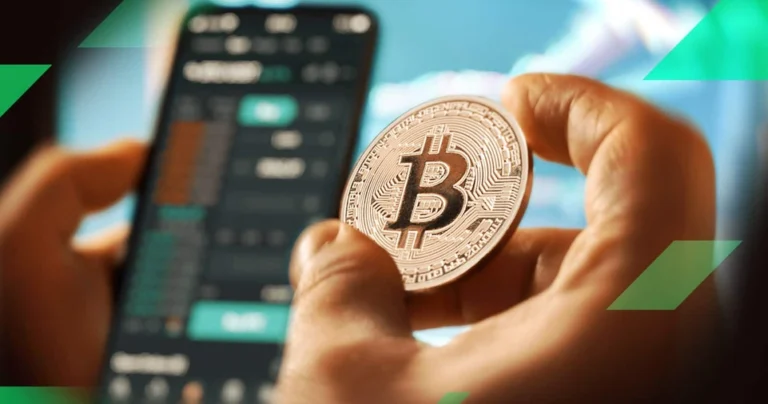Cryptocurrency has exploded from a niche internet experiment into a global financial force. With major institutions investing, governments exploring regulation, and retail investors joining en masse, the crypto space is no longer a fringe pursuit.
But for beginners, stepping into this fast-paced, often confusing world can be overwhelming. This guide breaks down what you need to know to get started with cryptocurrency, including essential concepts, platforms, risks, and strategies.
What is Cryptocurrency?
Cryptocurrency is a digital or virtual currency that uses cryptography for security and operates on decentralized networks called blockchains. Unlike traditional currencies issued by governments, cryptocurrencies are typically maintained by peer-to-peer networks.
Key Features of Cryptocurrency:
- Decentralization: Not controlled by a central authority.
- Security: Transactions are encrypted and verified by network nodes.
- Transparency: All transactions are recorded on a public ledger (blockchain).
- Limited Supply: Many cryptocurrencies have a cap on total supply (e.g., Bitcoin has a limit of 21 million coins).
Why People Invest in Cryptocurrency
People are drawn to crypto for different reasons:
- Potential for high returns
- Hedge against inflation
- Decentralized finance (DeFi) opportunities
- Belief in blockchain technology
- Access to global and borderless finance
Cryptocurrencies like Bitcoin and Ethereum have experienced massive growth, drawing in both investors and speculators.
Step-by-Step Guide to Getting Started with Cryptocurrency

Understand the Basics
Before investing, you need to grasp fundamental concepts:
- Blockchain: A distributed ledger that records transactions.
- Wallet: A digital tool to store your cryptocurrencies.
- Exchange: A platform to buy/sell crypto.
- Private Key: A secret code that allows access to your wallet.
Choose the Right Cryptocurrency
Start with well-known cryptocurrencies:
- Bitcoin (BTC)
- Ethereum (ETH)
- Solana (SOL)
- Cardano (ADA)
Avoid obscure altcoins unless you fully understand the risks and use case.
Select a Cryptocurrency Exchange
A good exchange is essential for buying, selling, and trading. Look for:
- Security features (2FA, cold storage)
- User interface
- Liquidity
- Fees
- Supported coins
Popular Exchanges:
| Exchange | Features |
|---|---|
| Coinbase | Beginner-friendly, insured wallets |
| Binance | Low fees, wide variety of coins |
| Kraken | High security, advanced features |
| Gemini | Regulated, secure, clean interface |
Set Up a Wallet
Wallets store your private keys. Types include:
- Hot Wallets: Online-based (e.g., MetaMask, Trust Wallet)
- Cold Wallets: Hardware or paper wallets (e.g., Ledger, Trezor)
For long-term holding, cold wallets are safer.
Fund Your Account
Use bank transfer, credit card, or peer-to-peer transfers to deposit fiat currency into your exchange account. Be mindful of transaction fees.
Make Your First Purchase
Start small. Diversify. Consider dollar-cost averaging (DCA) to mitigate volatility.
Safety and Security Tips
Keep Your Assets Secure
- Enable two-factor authentication (2FA)
- Use cold storage for large holdings
- Never share your private key
- Avoid phishing scams and suspicious links
Understand the Risks
- High volatility: Prices can swing dramatically
- Regulatory risks: Legal status varies by country
- Scams: Ponzi schemes, pump-and-dump groups
- Technical issues: Lost keys, wallet failures
Stay Updated
Follow trusted crypto news sources:
- CoinDesk
- The Block
- Decrypt
- Crypto Twitter (but verify info!)
Essential Cryptocurrency Terms for Beginners
| Term | Definition |
|---|---|
| Altcoin | Any cryptocurrency other than Bitcoin |
| HODL | “Hold On for Dear Life” – long-term investing strategy |
| NFT | Non-fungible token, a unique digital asset |
| Gas Fees | Transaction fees on blockchain networks (especially Ethereum) |
| Market Cap | Total value of a cryptocurrency = price x circulating supply |
| DeFi | Decentralized finance applications and services built on blockchain |
| Staking | Locking up crypto to support network operations and earn rewards |
| Wallet Address | A public string of letters/numbers used to receive crypto |
Beyond Buying and Selling: What You Can Do With Crypto

Cryptocurrency isn’t just for buying and holding. You can:
- Stake Tokens: Earn passive income by helping secure blockchain networks.
- Lend Crypto: Platforms like Aave or Compound allow you to earn interest by lending your assets.
- Use DeFi Platforms: Swap tokens, earn yield, and borrow without a bank through DeFi apps.
- Buy NFTs: Invest in or collect digital art and assets.
- Participate in DAOs: Decentralized Autonomous Organizations let you vote on proposals and help govern crypto projects.
- Accept Crypto for Payment: As a freelancer or business, you can accept crypto for goods and services.
Common Beginner Mistakes to Avoid
| Mistake | Why It’s a Problem |
|---|---|
| Investing more than you can lose | Crypto is volatile. Don’t overexpose yourself financially. |
| Not researching projects | Many coins are hype-driven. Know the fundamentals. |
| Failing to secure wallets | Lost keys = lost funds. Always back up securely. |
| Chasing pumps | Buying high often leads to losses. Avoid FOMO. |
| Ignoring tax implications | Many countries tax crypto gains. Understand your obligations. |
How to Continue Learning
Crypto evolves fast. Keep learning:
- Read whitepapers of projects
- Join communities (Reddit, Discord, Telegram)
- Take courses (Coursera, Binance Academy, Coin Bureau YouTube)
- Try testnets to safely explore blockchain apps
ALSO READ: How to Transition a Traditional Business into the Blockchain Space?
Conclusion
Starting your cryptocurrency journey doesn’t have to be intimidating. By learning the basics, securing your assets, and taking measured steps, you can participate confidently in this transformative digital economy. Always start small, stay informed, and never invest more than you can afford to lose.
Crypto is here to stay. Whether you’re investing, building, or just curious, now is a great time to get involved.











